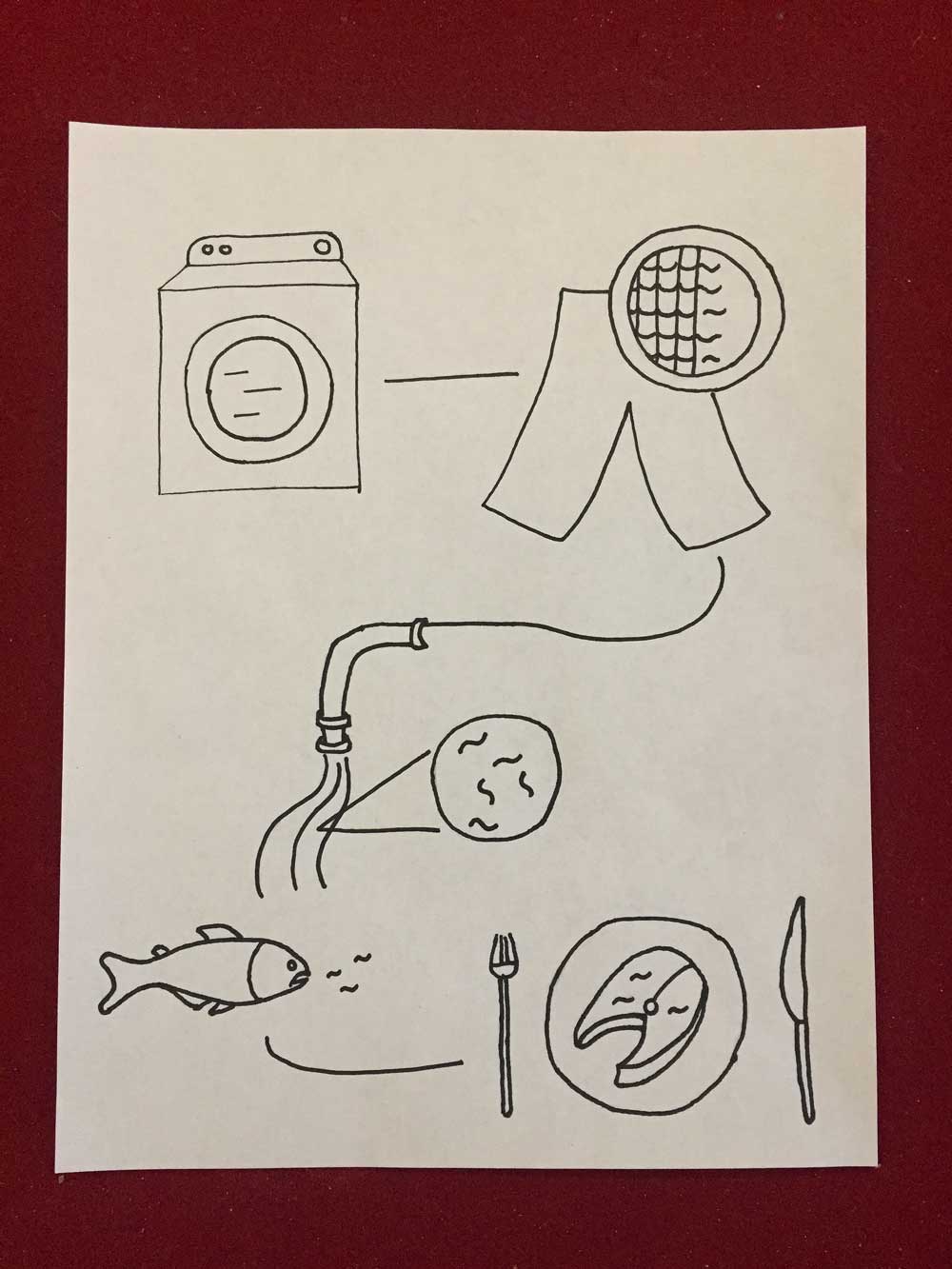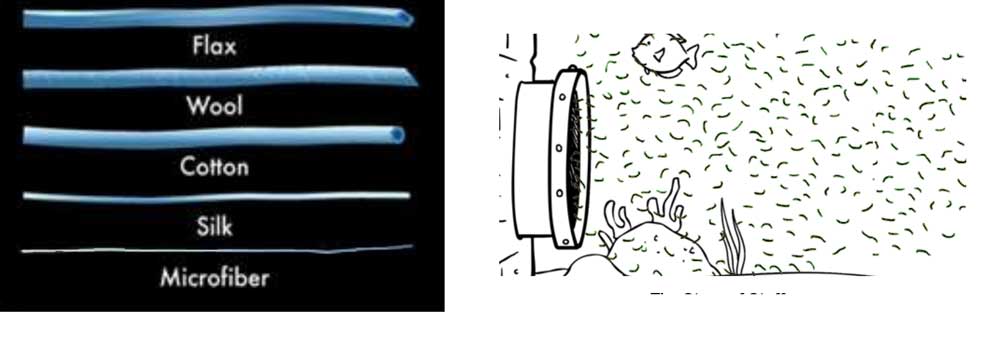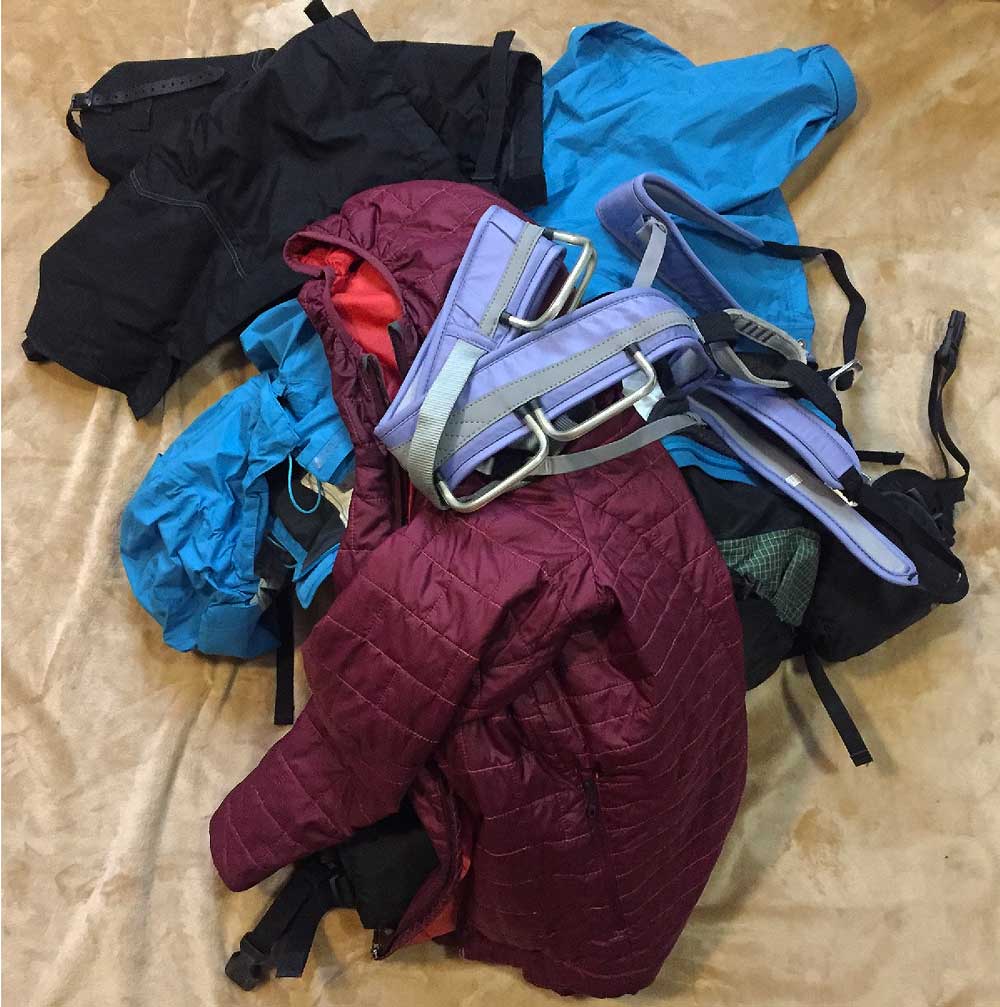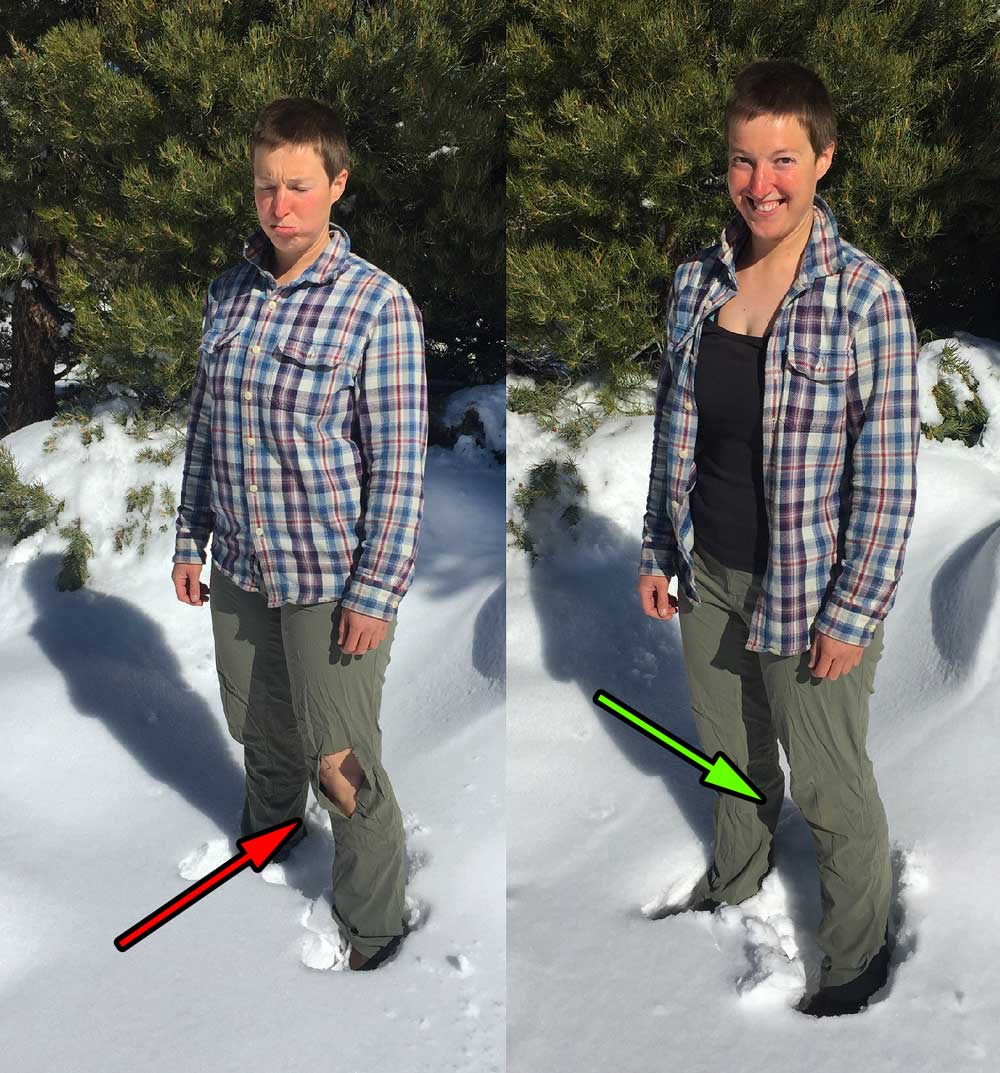Do you know what you’re wearing? When discussing the natural origin of materials with students, discovering that plastics are typically made from crude oil – the same fossil fuel used to power our cars – is astonishing to most.
Revealing that much of their clothing is also made from this same crude oil is nearly unbelievable.
Yet consumer data reveals that this is the case. More than two thirds of global textiles are currently produced from synthetic fibers, and nearly all of those synthetics are created from petroleum products. The manufacture, laundering, and disposal of these synthetics heavily contributes to the accumulation of microplastics in the ecosystem, and the bioaccumulation of microplastics in the food chain, with potentially devastating results.

Why do we care about our clothing origins?
Petroleum based fibers do not decompose, or break down back to their component parts. Instead, they shed, or fragment into smaller and smaller pieces. These microfibers composed of plastic materials make their way through waste water and runoff into oceans, accumulating as microplastics.
 Microplastics – classified as plastic particles less than 5mm in diameter – are a growing field of research, but the data collected in recent years strongly indicates that microplastics accumulate in the oceanic food chain, with heavy concentrations in shellfish and filter feeders, making their way up to sea birds that feed on shellfish, and whales. Microfibers from textiles are of special concern. The elongated form of these fibers causes blockages in digestive systems, and collect in the intestines of larger animals. Although biomagnification of microplastics further up the food chain is not yet well studied, preliminary results show that microplastics are now present in notable quantities in our food supply. Estimates on the percentage of marine environment microplastics originating from textiles range from 20-35%.
Microplastics – classified as plastic particles less than 5mm in diameter – are a growing field of research, but the data collected in recent years strongly indicates that microplastics accumulate in the oceanic food chain, with heavy concentrations in shellfish and filter feeders, making their way up to sea birds that feed on shellfish, and whales. Microfibers from textiles are of special concern. The elongated form of these fibers causes blockages in digestive systems, and collect in the intestines of larger animals. Although biomagnification of microplastics further up the food chain is not yet well studied, preliminary results show that microplastics are now present in notable quantities in our food supply. Estimates on the percentage of marine environment microplastics originating from textiles range from 20-35%.

But am I really responsible for this issue?
As outdoor educators who live, work, and recreate in the outdoors, the majority of our clothing and gear is made from so-called “performance fabrics”. With the minor exception of wool baselayers, performance apparel is made from synthetic materials. In mainstream consumer products, the trend of “fast fashion” in chains such as H&M, Forever 21, Walmart, JCPenney, etc, contributes millions of tons of synthetic fiber waste per year.

According to the World Apparel Fibre Consumption Survey of 2013, over 60% of global textile production is synthetic. Furthermore, market reports from industry analysis group Tecnon OrbiChem show that global fiber demand and production of synthetics has continued to grow in total percent every year from 1980 to the present day. Textiles made from petroleum products include polyester, nylon, acrylic, modacrylic, and elastane, among others.
 These fibers in turn are marketed under various names, such as silnylon, China silk, spandex, lycra, dyneema, etc. Of these synthetics, polyester dominates the market at 78% of total synthetic textile production. The manufacture of polyester alone uses over 70 million barrels of oil per year, with approximately 8% of total global oil production used in the manufacture of plastic fibers as a category.
These fibers in turn are marketed under various names, such as silnylon, China silk, spandex, lycra, dyneema, etc. Of these synthetics, polyester dominates the market at 78% of total synthetic textile production. The manufacture of polyester alone uses over 70 million barrels of oil per year, with approximately 8% of total global oil production used in the manufacture of plastic fibers as a category.
So how can you help? In the High Trails’ “Environmental Awareness” class, we teach the 4 R’s: Reduce, Reuse, Repair, Recycle. These are applicable to the synthetic fiber crisis. Consume less. Extend the life of the synthetic garments and gear you buy via reuse and repair.

REPAIR!!!!!!!!
Whenever possible, purchase items made from recycled polyester, instead of virgin polyester. Recycled nylon is also available. These recycled fibers maintain nearly all the strength and durability of the originals, and reduce the amount of synthetic fiber waste. Furthermore, these studies, among several others, show that the durability of a synthetic garment, combined with type and frequency of washing, do much to control the amount of microfiber shedding into the water system. Using higher-quality materials, washing on gentle, cold cycles with mild detergents, and laundering less frequently overall reduced microfiber shedding.
Plastics in our environment – including those from petroleum based synthetic fabrics – do not disappear. It is up to us to stop the flow of plastics into our oceans, our wildlife, our water, and our food supply.


 Microplastics – classified as plastic particles less than 5mm in diameter
Microplastics – classified as plastic particles less than 5mm in diameter 

 These fibers in turn are marketed under various names, such as silnylon, China silk, spandex, lycra, dyneema, etc. Of these synthetics, polyester dominates the market at 78% of total synthetic textile production.
These fibers in turn are marketed under various names, such as silnylon, China silk, spandex, lycra, dyneema, etc. Of these synthetics, polyester dominates the market at 78% of total synthetic textile production.
Comments are closed.